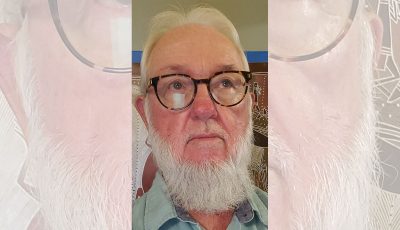Whangara’s whale rider
I did not make it to Whangara when my second wife and I drove around the North and South Islands of New Zealand one half-a-month a zillion years back. My second daughter with my primal spouse spent her last year in high school in a town in the South Island near the ferry town of Nelson in the ’90s, and I recently visited her family (Irish husband and two boys) in Concord, CA, by the Diablo mountain where she let me watch her copy of the movie, the Whale Rider, set in the novel and filmed in Whangara, North Island, New Zealand.
I recently celebrated the bonne femme of colleagues who gathered in Bonham, Texas, a few weeks back as we recognized once more that we are as a specie way behind in walking our talk on gender equality. For those of us who benefit from the shadows of patriarchy, we can never be confessional enough about our active participation in ignoring the Chinese sage’s wisdom that declares: “Women hold half of the sky” (fu nu neng ding ban bian tian).
The movie. The main character, played by a young Aussie girl Keisha Castle-Hughes who three years later showed up in Star Wars III, and a year later, Mary in Nativity, is named Paikea “Pai” Apirana. In the movie, she is the daughter of a young Maori father Porourangi, whose wife, and son, a twin to “Pai,” die at childbirth. Porourangi is strained from his father, the chief warrior of his community; he refuses to follow after his father’s footsteps, and will not allow his father to “use” him again to sire another child.
The father, Paikea’s grandpa, is Koro, dyed-in-the-wool stuck in the male prerogative to lead the Maori. But not just male prerogative; he must be the first son, for his second son is just as able but he refuses to bestow on him the privilege to train as the new chief warrior. While he was emotionally close to first-born granddaughter Paikea, he resisted letting “Pai” grow up to lead the community, although she was willing and able to play the role.
Koro prepares the male kids to be warriors; Pai learns how to be one on the side, including the ability to utter traditional Maori chants without grandpa’s assistance, in spite of grandpa’s disdain for her progressive assertiveness.
The Maori of Koro’s chants claim to have come from the island of Havai’i, which would be in Tahiti of French Polynesia, previously from Sava’i in Samoa. From Havai’i, legend had it that a warrior rode a whale to lead the Maori to the island. Thus, the whale rider.
Koro takes his students to the ocean and drops the chief’s main symbol of a whale bone into the deep water, admonishing the students that whoever brings it back up gets to be the new chief. Two boys cannot locate it, another two fight over it, subsequently dropping it on the way up for air. Koro’s No. 2 son who was with the group when the whalebone was dropped takes Pia to the site, and, of course, she comes up with it, alongside with a live lobster for the pot for good measure!
I am going in details here because this story, more than a decade old, is couched in the metaphor of a Polynesian culture that may easily be dismissed as a relic of the past. In reality, the ascendancy of the female of the specie to be at par with the social status of their male counterpart is clearly non-existent even in supposedly enlightened civil society like the United States. Worse, females getting beaten up globally seemed to have gotten more prominence in the reporting of late.
Back to the movie. A pod of whales strand themselves on the sand of Whangara to die, resistant of any attempt by the Maori to get them back into the water. Pia decides to ride the biggest one, and ride she does, holding her breath underwater as the rest of the herd heads out to the open sea. Koro, meanwhile, gets his whale bone back informed that it was retrieved by the granddaughter!
A melodramatic tale, it is. Controversial issues are often better dealt with in metaphors rather than objective logical discourse. My life has been surrounded with feminine presence throughout my existence so far, and partly matriarchal in my upbringing since Dad went to graduate school in another country when I was but 10, the matrilineal line of our Pacific culture (as opposed to the Spanish patrilineal bent) got accented. That’s probably why I have sensitivity to my own contribution in the dastardly affair of reflexive cultural machismo.
What has become clear, like any liberation movement of note, is that the outsider cannot hold the fort. The insiders will have to plot their own assertiveness to succeed. But like the Caucasians and non-Africans during the U.S. civil rights movement, we were but a useful fodder to assault the “guilt” of the dominant white society; it took the blood, flesh, and broken bones of descendants of former African slaves in the South to finally get the point across.
The Civil Rights Act of 1964 in the U.S. was costly. With an African-American President, Obama crowns a journey that was costly. As to the bonne femme, Pia notwithstanding, I’d be lying if I say, you’ve come a long way, baby!



























